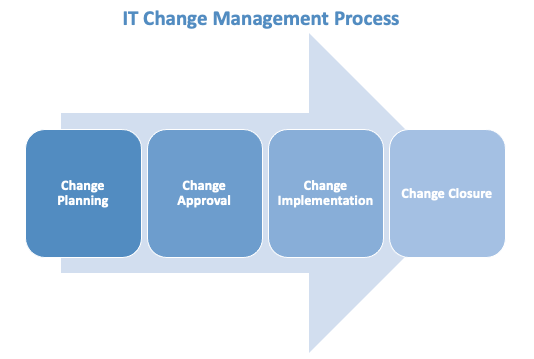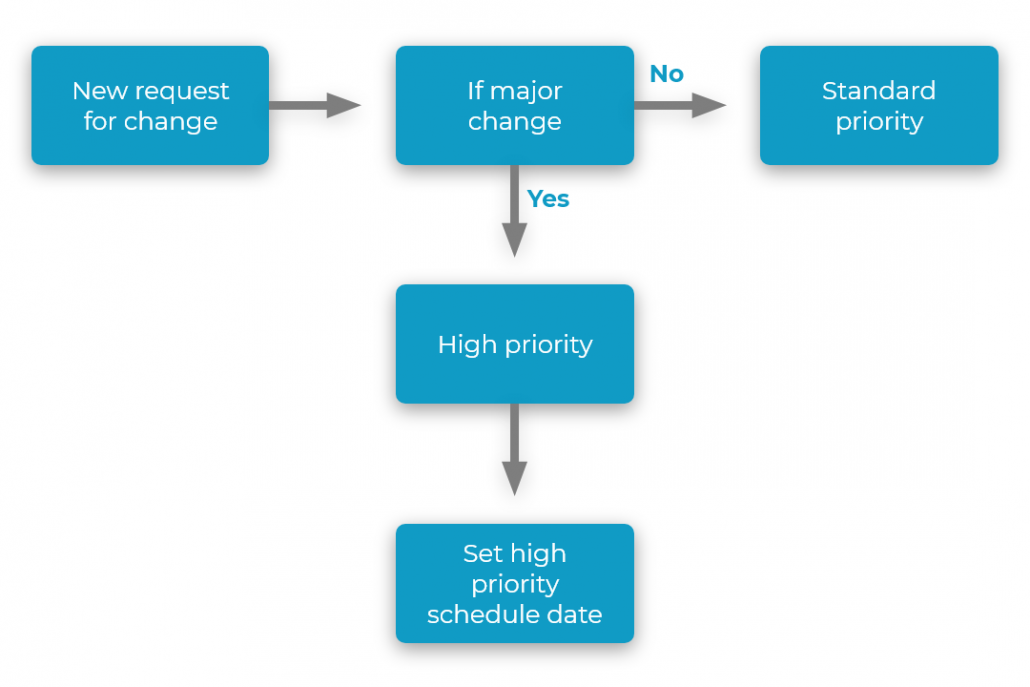Change is inevitable but never easy especially in IT. IT professionals can relate to this statement.
When it comes to ITSM, solid change management is a sign of maturity.
Why is that?
Among the ITIL processes, change management is the most difficult to get right, because it requires the right mix of process, people, and technology.
There’s a lot of grey areas when it comes to implementing change management.
Even the official guide from ITIL has little practical advice and talks more about terminologies and processes.
In this blog, I will discuss seven best practices to keep in mind while implementing change management.
Before that let’s recap the basics:
- Change Planning: In this stage, change coordinators prepare the plan for the implementation of changes.
- Change Approval: In this step, the change manager and approvers like customer representatives and service owners review and approve planned changes.
- Change Implementation: In this stage, change specialists perform the actual implementation of infrastructure changes and execute production tests after changes have been implemented.
- Change Closure: Finally, in this step, change coordinators close out changes once the changes have been tested.
Benefits of Change Management
The change management process, when properly planned, comes with significant business benefits. Some of these include:
- Better risk management
- Rapid change implementation
- Reduced service disruptions and impact on business operations
- Enhanced alignment between IT and business
- Greater visibility into IT change
- Increased compliance to government and other regulations
- Boosted employee productivity
Key Performance Indicators (KPIs) for Change Management
Key KPIs and metrics that should be measured for the change management process include:
- Increase in percentage of changes implemented to services
- Overall reduction in the number of failed changes
- Reduction in number of service disruptions caused by failed changes
- Reduction in number of unauthorized changes
- Decrease in the backlog of change requests
- Reduction in number of incidents ascribed to changes
- Average time to implement a change based on priority, urgency, and/or type
- Increase in overall change success rate
- Frequency and Volume of change
- Percentage of planned vs. unplanned changes
Best Practices for ITIL Change Management
Now coming to the best practices that will help you get a better grip on change management.
1. Configure change management in conjunction with configuration management
Change management needs configuration management to view the infrastructure to assess the impact and record changes.
Motadata ServiceOps ITAM provides a robust CMDB that is kept up to date using scheduled tasks.
This has a direct benefit for our integrated change management module in terms of accessibility.
2. Identify why you want ITIL change management
It’s a good practice to summarize the objectives that you want to achieve through change management.
Once the objectives are clear, you would know whether they are aligned with the overall business objectives.
A clear set of objectives will help you to get higher-ups on board with change management by selling the benefits.
3. Comprehend the impact of changes
Understanding and quantifying change risks and consequences beforehand allows us to identify an adequate reaction that may involve accepting the risk of change, mitigating it by altering the change, or avoiding it by prohibiting the change until it presents less risk.
If a change fails, you need to develop a roll-back strategy to restore the previous operating environment and analyze the modification further.
If a high-risk change causes severe service disruptions, you can halt the change until the operational environment stabilizes.
4. Communicate the importance of change management
In a survey done by McKinsey, 2200 executives have voted commitment-to-change as a key indicator for a successful change.
It’s normal for a request-for-change to have multiple stakeholders. It’s important for them to know what’s for them.
5. Have a single definition for change management and its types
Change has a different meaning for different people so having a clear definition of a change model is important.
Along with that, you also need to define the change types:
Motadata ServiceOps ITSM allows you to define the following types:
- Emergency
- Major
- Minor
- Normal Change
- Significant
- Standard
6. Define the roles and responsibilities in change management
Change is a process that needs people, and it’s your job to make sure that their roles and responsibilities are defined.
Some of the common roles/groups involved in a change process are:
- Change Manager: Some of the functions of a change manager are: reviewing of submitted RFC, planning of change schedule, make records in the CMDB, performing an impact analysis, etc.
- Change Owner: Every change needs an owner who will supervise the entire process.
- CAB (Change Advisory Board): Generally, a group of people who reviews each and every change in terms of business, operation, and technical feasibility.
- Emergency Change Advisory Board: Generally, a small group that is available on short notice to manage sudden emergencies.
7. Have change management workflows
A workflow gives a structure for better and faster decision-making.
In Motadata ServiceOps Change Management, we provide a standard model on top of which you can build your change workflows.
An example workflow that you can build using our workflow creator:
Key Takeaway
What I have discussed above, as best practices, are consistent with ITIL change management, which at its core is all about value addition.
Let me elaborate on the value I just spoke about. Solid change management will make your IT more ready to say yes to changes, which in turn will pave the way for positive disruptions.
FAQs:
The main goal of change management in the ITIL framework is to make sure that all changes to IT services meet business requirements. These changes should be done in a careful and organized way. This helps to reduce risks to the stability and service delivery of the IT environment.
Common mistakes in ITIL Change Management are not handling risk management well, not communicating properly with stakeholders, forgetting to document the change process, and not learning from past experiences.
Organizations can check how well their change management processes are working. They can do this by tracking important numbers, like how often changes succeed, any backlogs, and incident rates after changes are made. This information helps companies to improve constantly by finding areas that need better results.






